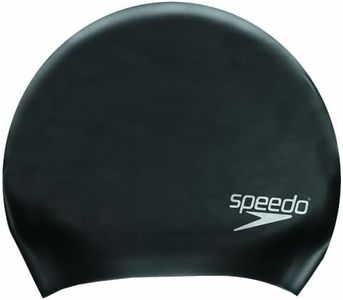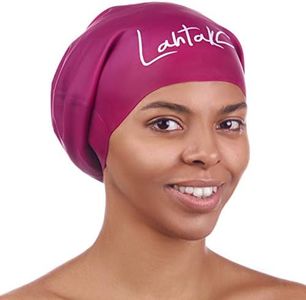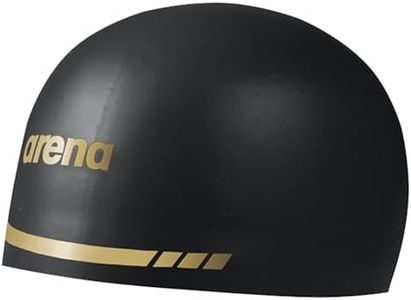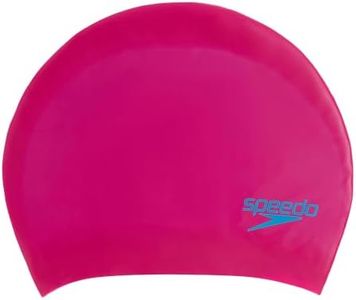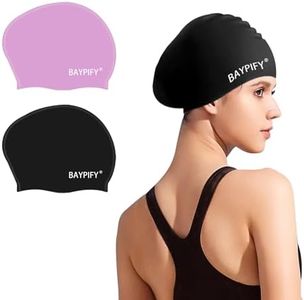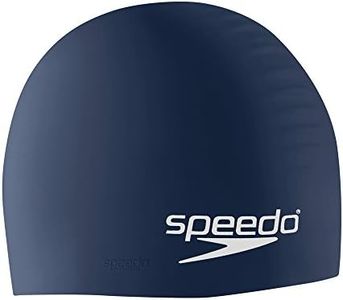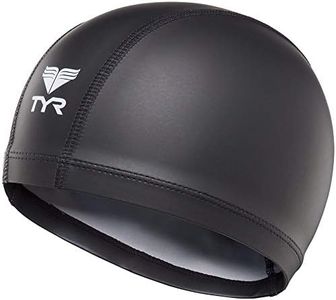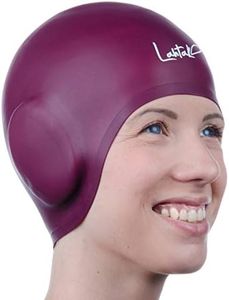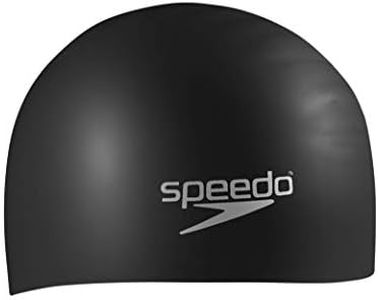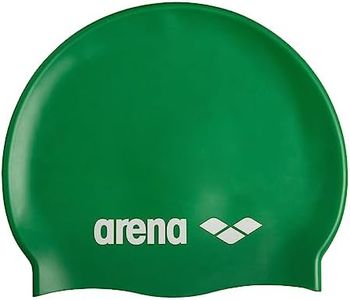We Use CookiesWe use cookies to enhance the security, performance,
functionality and for analytical and promotional activities. By continuing to browse this site you
are agreeing to our privacy policy
10 Best Waterproof Swim Caps
From leading brands and best sellers available on the web.Buying Guide for the Best Waterproof Swim Caps
When choosing a waterproof swim cap, it's important to think about comfort, performance, and how well the cap will serve your specific swimming goals. Swim caps are not just about keeping water out; they also help streamline your head for faster swimming, keep your hair out of your face, and in some cases, protect your hair from chlorine. Knowing what features to look for will help you pick a swim cap that suits your needs in the pool or open water.MaterialThe material of a swim cap greatly affects its waterproof capabilities, comfort, and durability. Common materials include silicone, latex, and lycra. Silicone caps provide the most waterproof barrier, feel smooth, and are less likely to pull hair, making them suitable for longer swims and frequent use. Latex is thinner and can offer a snug fit but is prone to tearing and may not feel as comfortable for people with longer hair. Lycra feels like a soft fabric and is gentle on hair, but it does not keep water out as effectively as latex or silicone. If you want maximum waterproofing and durability, silicone is often the top choice, while those seeking comfort for shorter swims may prefer lycra.
Fit and SizeThe fit and size of a swim cap determine how effectively it keeps water out and how comfortable it feels. A good fit means the cap will sit snugly against your head without being painfully tight. Swim caps come in adult and youth sizes, and some offer specific shapes to accommodate long hair. For optimal performance, try to find a cap that provides a secure seal around the hairline and ears but doesn’t cause discomfort. If you have long or thick hair, look for options labeled as 'long hair' or that provide extra space at the back.
Style and Ear CoverageSwim caps vary in style, with some offering extended coverage over the ears for increased waterproofing and protection. Standard caps cover just above the ear, while some designs include pockets or flaps that shield the ears from water and help with warmth and noise reduction. Consider a cap with more ear coverage if you are sensitive to water in your ears or swim in colder water. For casual swimming where ear protection isn't a priority, a classic fit will work well.
Ease of Putting On and RemovalHow easy it is to put on and take off your swim cap is an often-overlooked feature, but it’s important—especially if you have long or thick hair. Silicone and lycra caps tend to glide over hair more smoothly and are less likely to cause pulling or breakage, while latex caps can be more challenging to handle. If you frequently struggle with donning a cap or want to avoid hair tangles, choose materials with a smoother surface and consider options designed specifically for easy application.
Durability and MaintenanceDurability refers to how well the swim cap holds up over time, especially with exposure to chlorine and sun. Silicone swim caps are generally the most durable and resist degradation from pool chemicals, while latex can degrade and become sticky faster. Lycra, though soft, may lose elasticity quicker. Look for swim caps that state they are chlorine-resistant or have reinforced seams. If you swim often, choose a cap that’s known for lasting through repeated use and is easy to rinse and dry between sessions.
